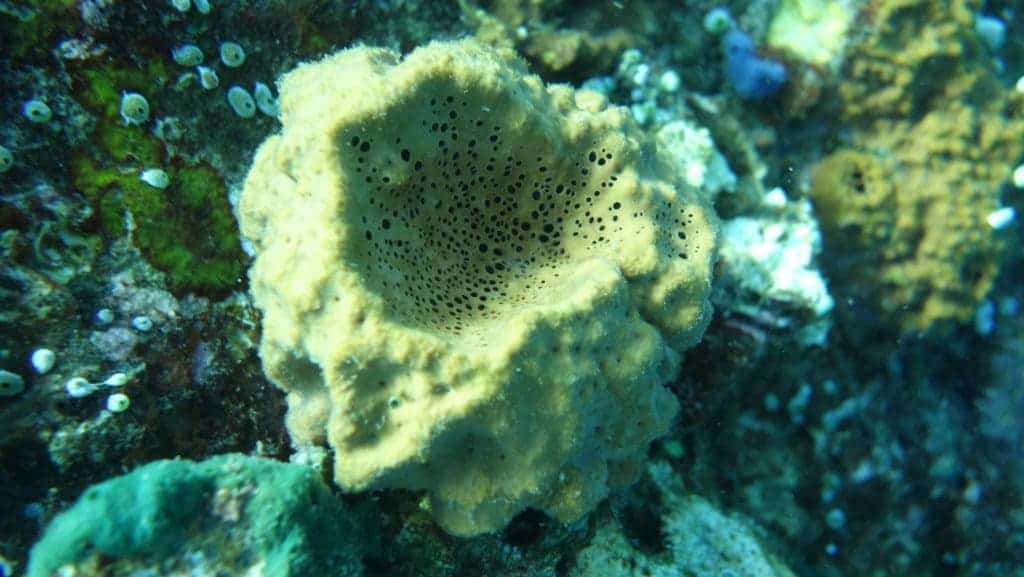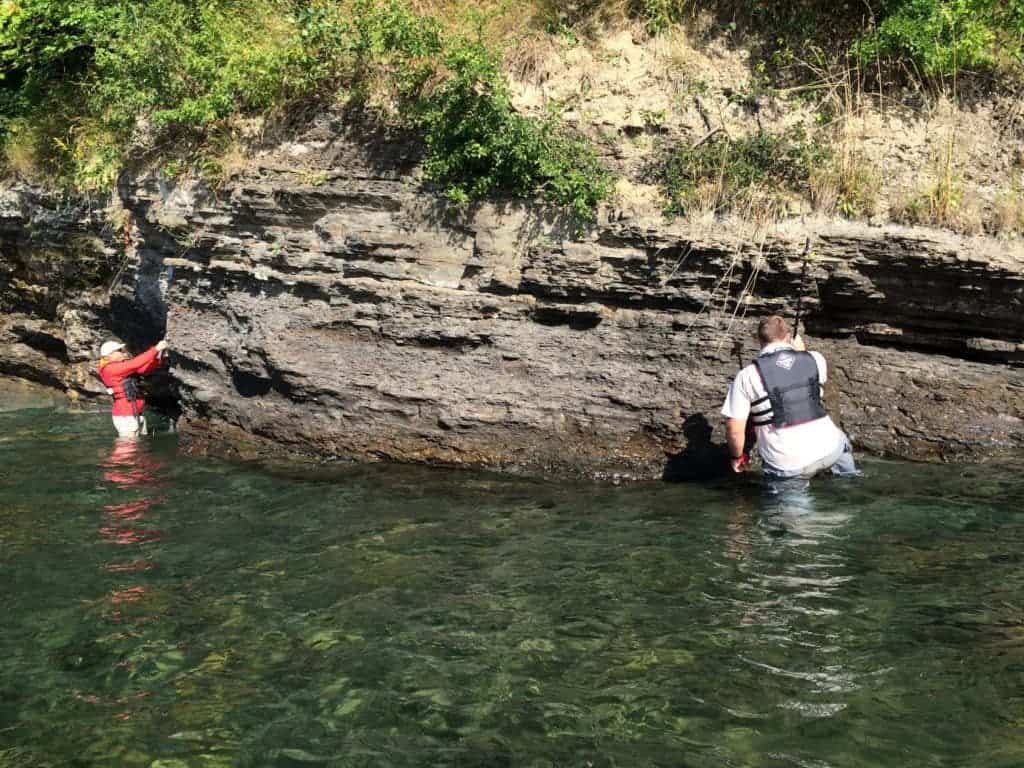Inside ancient rocks and oils recovered from Oman, Siberia, and India, researchers have found ancient chemical compounds that are uniquely synthesized by certain species of sponges. Dating back at least 100 million years before the Cambrian explosion — the sudden appearance in the fossil record of complex animals with mineralized skeletal remains — the findings represent the oldest evidence of animal life.

Rhabdastrella globostellata, a modern demosponge that produces the same 26-mes steroids that the researchers found in ancient rocks. Credit: Paco Cárdenas.
We know very little about the earliest animals that evolved on Earth. The main problem is that such creatures didn’t have a skeleton, and hence did not leave a body fossil record. But that doesn’t mean they didn’t leave any sign of their existence.
Researchers led by Gordon Love, a professor at the University of California, Riverside, identified a steroid compound named 26-methylstigmastane (26-mes) in ancient rocks. Today, the chemical is only synthesized by modern sponges called demosponges.
The molecular signs of life, called biomarkers, date back to 660-635 million years ago, during Neoproterozoic Era. This was arguably the most revolutionary period in Earth’s history, in terms of life’s evolution. Extending from 1,000 to 541 million years ago, the Neoproterozoic stands at the intersection of the two great tracts of evolutionary time: on the one side, some three billion years of pervasively microbial ‘Precambrian’ life, and on the other the modern ‘Phanerozoic’ biosphere with its extraordinary diversity of large multicellular organisms.
“This steroid biomarker is the first evidence that demosponges, and hence multicellular animals, were thriving in ancient seas at least as far back as 635 million years ago,” Alex Zumberge, a doctoral student working in Love’s research group, said in a statement.

Alex Zumberge (right) collects 750 million-year-old rocks from a lake outcrop in Sweden. Credit: UC Riverside.
The work follows in the footsteps of a previous study authored by Love’s team. The 2009 study reported the first compelling biomarker evidence for Neoproterozoic animals, a different biomarker called 24-isopropylcholestane (24-ipc). However, at the time the findings proved controversial because the steroids can also be found in a few modern algae. But coupled with this new work that described 26-mes ancient biomarkers, scientists are now much more confident that both compounds are fossil biomarkers produced by demosponges on an ancient seafloor. A 2016 MIT study also concluded that first animal must have been a sea sponge.
“The combined Neoproterozoic demosponge sterane record, showing 24-ipc and 26-mes steranes co-occurring in ancient rocks, is unlikely attributed to an isolated branch or extinct stem-group of demosponges,” Love said. “Rather, the ability to make such unconventional steroids likely arose deep within the demosponge phylogenetic tree but now encompasses a wide coverage of modern demosponge groups.”
The findings were reported in the journal Nature Ecology & Evolution.









